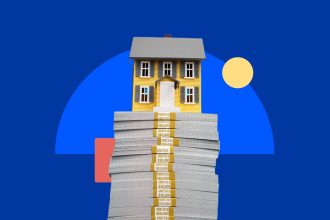Key takeaways
- Interest on federal student loans in the SAVE repayment plan forbearance resumes on Aug. 1, 2025.
- Payments will resume at a yet-to-be-announced later date, though the government plans to phase out the SAVE plan.
- Borrowers who do not want to see their balances grow should apply now to the Income-Based Repayment plan.
Interest will begin accruing for federal student loan borrowers enrolled in the SAVE repayment plan on Aug. 1, 2025. However, the Trump administration has not announced an end to the administrative forbearance, meaning the 8 million enrolled borrowers are not yet required to resume payments. This change follows recent court decisions blocking the SAVE repayment plan. Borrowers need to take action now to avoid unexpected costs.
History of the SAVE forbearance
Borrowers in the SAVE repayment plan were placed in an interest-free general forbearance starting on July 19, 2024, after the 8th Circuit Court of Appeals issued a stay temporarily blocking the SAVE repayment plan on July 18, 2024.
This litigation-related forbearance was expected to continue until the court cases against the SAVE repayment plan were fully resolved, or in fall 2025.
Then, the 8th Circuit Court of Appeals issued a decision that enjoined the SAVE repayment plan on February 18, 2025, remanding the case back to the U.S. District Court for the Eastern District of Missouri for further proceedings. The district court issued an injunction on April 14, 2025, that blocked the SAVE repayment plan. The court decisions became final when no appeal was filed within 30 days.
The end of the SAVE interest pause
On July 9, 2025, the U.S. Department of Education announced that interest will start accruing again on Aug. 1, 2025. Interest will not be charged retroactively. Thus, borrowers in the SAVE repayment plan have benefited from an interest-free forbearance for 12 months.
This announcement did not specify exactly when the general forbearance itself will end, writing, “When the SAVE Plan forbearance ends, borrowers will be responsible for making monthly payments that include any accrued interest as well as their principal amounts.”
The Biden administration previously said, on Jan. 15, 2025, that they expected the SAVE plan forbearance to last until “until servicers are able to accurately calculate monthly payments, which the Office of Federal Student Aid expects servicers to be able to do no earlier than September 2025. … Because this transition will take time, servicers expect first payments to be due no earlier than December 2025.”
A total of 8 million borrowers were in the SAVE repayment plan as of fiscal year 2024’s fourth quarter (July 1, 2024 to Sept. 30, 2024).
Assuming an average interest rate of 6.29 percent, the interest-free SAVE forbearance cost the federal government about $28 billion in total waived interest, or roughly $3,500 in interest per borrower.
SAVE enrollees should switch to a new repayment plan
The U.S. Department of Education is strongly encouraging borrowers in the SAVE repayment plan to switch to a new repayment plan. Doing so means resuming payments, but avoiding a growing balance.
Secretary of Education Linda McMahon said, “the Department urges all borrowers in the SAVE Plan to quickly transition to a legally compliant repayment plan — such as the Income-Based Repayment Plan.”
Current option: Income-Based Repayment
The U.S. Department of Education will be phasing out Income-Contingent Repayment and Pay As You Earn following the passage of the budget reconciliation bill, leaving IBR as the only income-driven repayment plan that is currently available.
Borrowers can switch to IBR using the IDR Plan Request Form.
The U.S. Department of Education started processing the forms on May 10, 2025, but a processing backlog has developed. It may take another month or two for the U.S. Department of Education to clear the current backlog.
Borrowers will be placed in a 60-day forbearance while their application is processed. If processing the borrower’s IDR application takes longer than 60 days, they will be placed in a general forbearance until the application is processed.
Future option: Repayment Assistance Plan (RAP)
The new income-based Repayment Assistance Plan (RAP) was enacted as part of the budget reconciliation bill on July 4, 2025. This repayment plan is still being implemented. It will take a few months for the U.S. Department of Education to make this repayment plan available.
Keep in mind:
If a borrower on one of the discontinued repayment plans does not proactively switch to another repayment plan by July 1, 2028, they will automatically be switched into RAP.
Impact on student loan forgiveness
The interest-free SAVE forbearance does not count towards time-based forgiveness after 20 or 25 years in an income-driven repayment plan or toward Public Service Loan Forgiveness (PSLF).
However, borrowers can use the buy-back option to get credit toward PSLF by making payments based on the number of months of qualifying employment during the SAVE forbearance and other deferments and forbearances, if it is sufficient for them to complete the required 120 qualifying payments.
Keep in mind:
The 60-day processing forbearance does count toward PSLF.
Otherwise, the borrower will need to switch to IBR or RAP for their future payments to count toward forgiveness. IBR requires 20 or 25 years of payments (240 or 300 payments) before forgiveness occurs, while RAP requires 30 years of payments (360 payments).
Why we ask for feedback
Your feedback helps us improve our content and services. It takes less than a minute to
complete.
Your responses are anonymous and will only be used for improving our website.
Help us improve our content
Read the full article here














